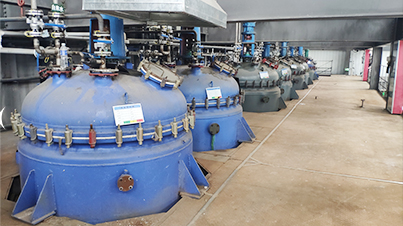poly aluminum chloride
Poly Aluminum Chloride An Overview
Poly Aluminum Chloride (PAC) is an inorganic polymer that is widely used in various applications, particularly in water treatment, paper manufacturing, and the cosmetic industry. It is a coagulant, meaning it helps to facilitate the aggregation of particles in water, thereby improving the effectiveness of water purification processes. Its unique chemical composition and properties make PAC a preferred choice over traditional coagulants such as alum.
Composition and Production
Poly Aluminum Chloride is typically produced by the reaction of aluminum hydroxide with hydrochloric acid or by reacting sodium aluminate with hydrochloric acid. The resulting product is a white or light yellow powder that is soluble in water. The molecular structure of PAC consists of aluminum ions, chloride ions, and hydroxyl groups, which can vary in proportion depending on the manufacturing process. This variability allows manufacturers to produce different grades of PAC, tailored for specific applications.
Applications in Water Treatment
One of the primary uses of Poly Aluminum Chloride is in water treatment. It is used in municipal water treatment plants to clarify water by removing suspended solids, organic matter, and microorganisms. The mechanism of action involves a process called coagulation-flocculation, where PAC promotes the aggregation of fine particles into larger clusters, or flocs, which can then be easily separated from the treated water.
PAC is favored in this application for several reasons. It produces a higher quality effluent compared to traditional coagulants, leading to improved removal rates of turbidity and color. Additionally, it tends to generate less sludge, which is a significant benefit for wastewater treatment facilities aiming to minimize disposal costs.
Benefits Over Other Coagulants
poly aluminum chloride

Compared to alum, PAC has several advantages. Firstly, PAC requires lower dosage rates, which means that less material is needed to achieve effective coagulation. This is not only cost-effective but also reduces the environmental impact associated with the transportation and storage of coagulants. Secondly, PAC functions effectively across a wider pH range, making it versatile for various types of water sources, including surface water, ground water, and even certain industrial effluents.
Moreover, PAC can enhance the performance of other water treatment chemicals, allowing for greater treatment efficiency. This synergistic effect leads to the better overall quality of treated water.
Industrial Applications
Beyond water treatment, PAC is also utilized in the paper industry as an sizing agent and in the production of certain cosmetics. In paper manufacturing, it improves the paper’s strength and wet resistance, allowing for better quality products. In cosmetics, PAC is often used due to its astringent properties, offering benefits in skin care formulations.
Environmental Considerations
While PAC has many advantages, it is essential to consider its environmental impact. The use of inorganic coagulants can lead to an increase in sodium levels in treated waters, which may have consequences for aquatic life. However, when used responsibly and monitored, the environmental risks can be effectively managed.
Conclusion
In summary, Poly Aluminum Chloride is a vital component in various industries, particularly in water treatment. Its effective coagulation properties, coupled with its versatility and reduced environmental footprint, make it a preferred choice over traditional alternatives. As water scarcity and quality remain global concerns, the importance of effective water treatment solutions like PAC will continue to grow. The ongoing research and development in the field will likely unveil new applications and innovations utilizing this valuable coagulant, firmly establishing its role in both industrial and environmental management strategies.
-
Premium Isothiazolinones | Broad-Spectrum Biocidal SolutionsNewsAug.28,2025
-
LK-319 Special Scale And Corrosion Inhibitor For Steel Plants: Advanced Solutions for Industrial Water SystemsNewsAug.22,2025
-
Flocculant Water Treatment: Essential Chemical Solutions for Purification ProcessesNewsAug.22,2025
-
Isothiazolinones: Versatile Microbial Control Agents for Industrial and Consumer ApplicationsNewsAug.22,2025
-
Scale Inhibitor: Key Solutions for Water System Scale PreventionNewsAug.22,2025
-
Organophosphonates: Versatile Scale Inhibitors for Industrial Water SystemsNewsAug.22,2025





